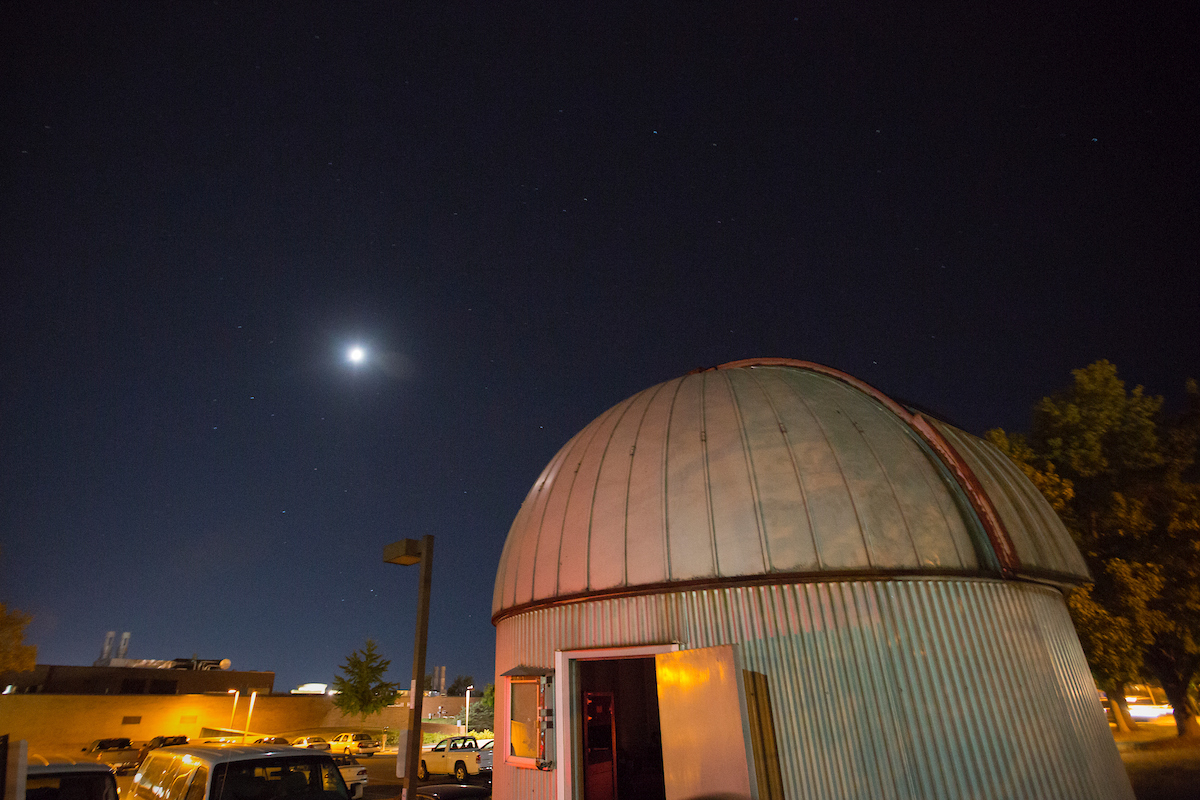Missouri S&T to host fall observatory events
Posted by Laura Studyvin

The Missouri S&T Observatory. Photo by Sam O’Keefe/Missouri S&T.
Several planets and other celestial objects will be visible after sunset in the night sky this fall, and amateur astronomers and curious skywatchers can view them, as well as a partial solar eclipse, through Missouri S&T’s 16-inch telescope.
Weather permitting, the S&T Astronomical Research Society will host free viewings throughout the fall semester, beginning with a viewing of Saturn 8:30-11:30 p.m. Friday, Sept. 1, at the Missouri S&T Observatory, located at 1550 N. Bishop Ave., near the university’s Stonehenge replica, north of McNutt Hall and west of St. Patrick’s Lane.
Five additional viewings are planned for the semester:
• Andromeda Galaxy – 8-11 p.m. Friday, Sept. 15.
• Full moon – 8-11 p.m. Friday, Sept. 29.
• Partial solar eclipse – 10:30 a.m.-1:30 p.m. Saturday, Oct. 14.
• Hercules Cluster – 7-10 p.m. Friday, Oct. 27.
• Dumbbell Nebula – 6-9 p.m. Friday, Nov. 10.
These viewings are free and open to the public; no reservation or ticket is required. Children are welcome at the observatory but must be accompanied by an adult. Visitors must be able to climb a small set of stairs to use the telescope for viewing.
For up-to-date information on viewings and schedule changes, please visit the S&T Astronomical Research Society’s Facebook page.
About Missouri University of Science and Technology
Missouri University of Science and Technology (Missouri S&T) is a STEM-focused research university of over 7,000 students. Part of the four-campus University of Missouri System and located in Rolla, Missouri, Missouri S&T offers 101 degrees in 40 areas of study and is among the nation’s top 10 universities for return on investment, according to Business Insider. For more information about Missouri S&T, visit www.mst.edu.
Leave a Reply